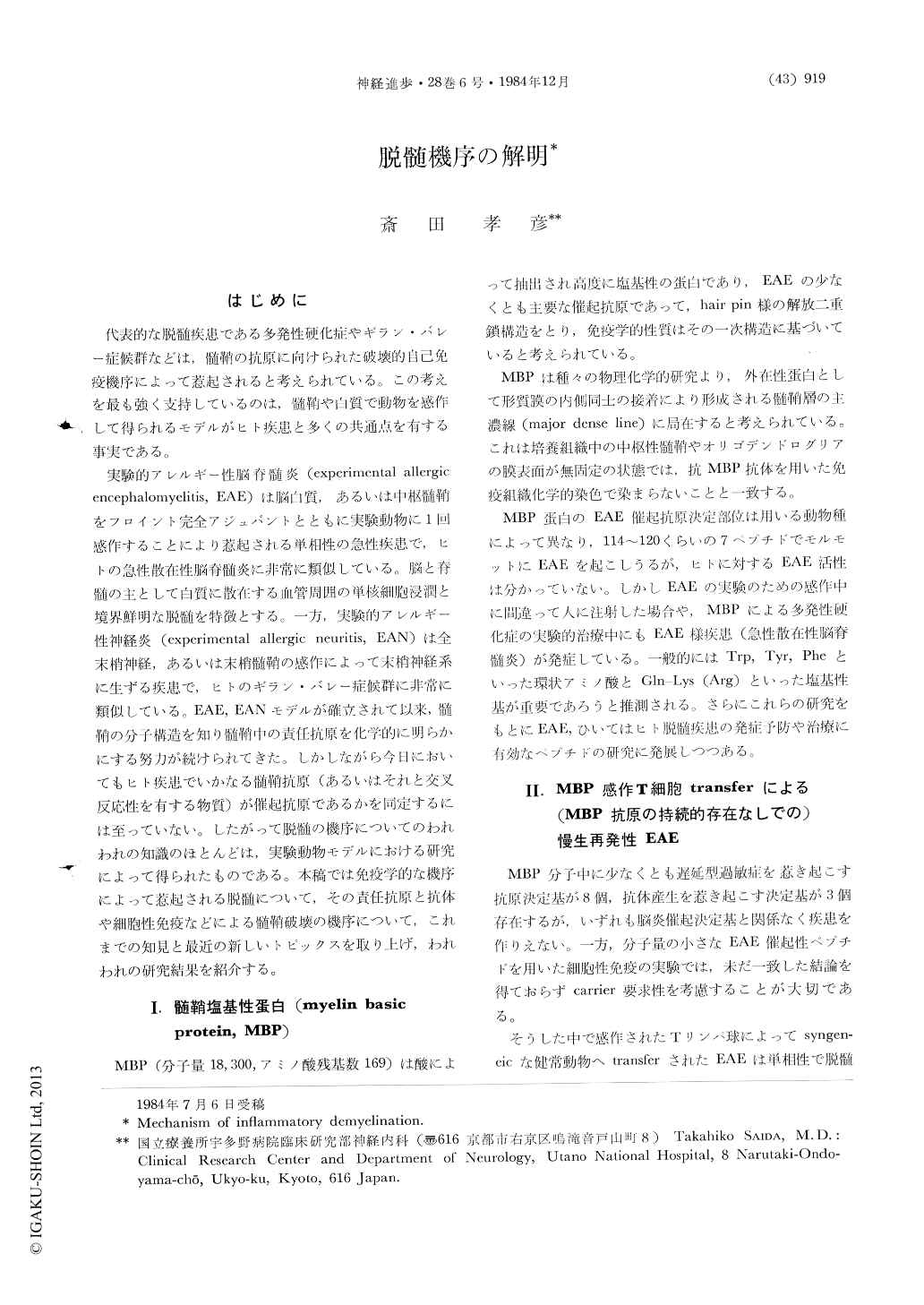Japanese
English
- 有料閲覧
- Abstract 文献概要
- 1ページ目 Look Inside
はじめに
代表的な脱髄疾患である多発性硬化症やギラン・バレー症候群などは,髄鞘の抗原に向けられた破壊的自己免疫機序によって惹起されると考えられている。この考えを最も強く支持しているのは,髄鞘や白質で動物を感作して得られるモデルがヒト疾患と多くの共通点を有する事実である。
実験的アレルギー性脳脊髄炎(experimental altergicencephalomyelitis,EAE)は脳白質,あるいは中枢髄鞘をフロイント完全アジュバントとともに実験動物に1回感作することにより惹起される単相性の急性疾患で,ヒトの急性散在性脳脊髄炎に非常に類似している。脳と脊髄の主として白質に散在する血管周囲の単核細胞浸潤と境界鮮明な脱髄を特徴とする。一方,実験的アレルギー性神経炎(experimental allergic neuritis,EAN)は全末梢神経,あるいは末梢髄鞘の感作によって末梢神経系に生ずる疾患で,ヒトのギラン・バレー症候群に非常に類似している。EAE,EANモデルが確立されて以来,髄鞘の分子構造を知り髄鞘中の責任抗原を化学的に明らかにする努力が続けられてきた。しかしながら今日においてもヒト疾患でいかなる髄鞘抗原(あるいはそれと交叉反応性を有する物質)が催起抗原であるかを同定するには至っていない。
Abstract
The autoimmune diseases of the central nervous system (CNS), experimental allergic encephalomyelitis (EAE) and neuritis (EAN), are induced by challenge of genetically susceptible animals with spinal cord homogenates or myelin basic protein (MBP). Chronic and relapsing forms of the disease have some similarities to human demyelinating disorders namely, multiple sclerosis. EAE can be transferred passively with sensitized lymphoid cells into syngeneic animals. Cells responsible for the transfer of acute murine EAE are Lyt-1+2-T cells.

Copyright © 1984, Igaku-Shoin Ltd. All rights reserved.


